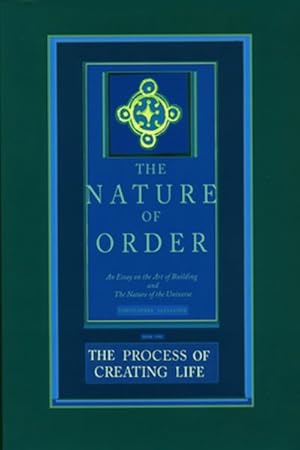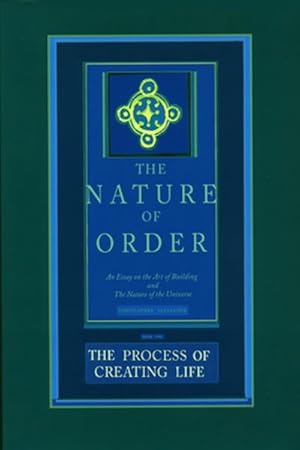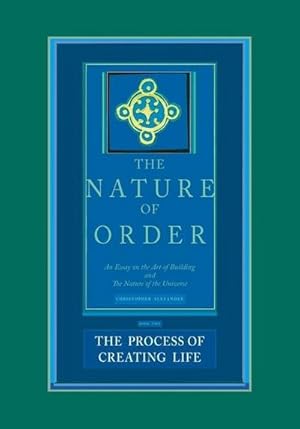Process Creating Life Nature by Alexander Christopher (19 results)
Search filters
Product Type
- All Product Types
- Books (19)
- Magazines & Periodicals (No further results match this refinement)
- Comics (No further results match this refinement)
- Sheet Music (No further results match this refinement)
- Art, Prints & Posters (No further results match this refinement)
- Photographs (No further results match this refinement)
- Maps (No further results match this refinement)
- Manuscripts & Paper Collectibles (No further results match this refinement)
Condition Learn more
- New (15)
- As New, Fine or Near Fine (2)
- Very Good or Good (1)
- Fair or Poor (No further results match this refinement)
- As Described (1)
Binding
- All Bindings
- Hardcover (19)
- Softcover (No further results match this refinement)
Collectible Attributes
Language (2)
Price
- Any Price
- Under £ 20 (No further results match this refinement)
- £ 20 to £ 35 (No further results match this refinement)
- Over £ 35
Free Shipping
Seller Location
Seller Rating
-
The Process of Creating Life: Nature of Order, Book 2: An Essay on the Art of Building and the Nature of the Universe (The Nature of Order)(Flexible)
Published by Center for Environmental Structure, 2002
ISBN 10: 0972652922 ISBN 13: 9780972652926
Language: English
Seller: GCCebooks, Salinas, CA, U.S.A.
Condition: Good. The cover and pages show normal wear. Book edges have stains. The dust jacket is damaged.
-
The Process of Creating Life: Nature of Order, Book 2: An Essay on the Art of Building and the Nature of the Universe (The Nature of Order)(Flexible)
Published by Center for Environmental Structu, 2002
ISBN 10: 0972652922 ISBN 13: 9780972652926
Language: English
Seller: Book Bunker USA, Havertown, PA, U.S.A.
Hardcover. Condition: New. *Brand new* Ships from USA.
-
Process of Creating Life : An Essay on the Art of Building and the Nature of the Universe
Published by Center for Environmental Structure, 2002
ISBN 10: 0972652922 ISBN 13: 9780972652926
Language: English
Seller: GreatBookPrices, Columbia, MD, U.S.A.
Condition: As New. Unread book in perfect condition.
-
The Nature of Order: An Essay on the Art of Building and the Nature of the Universe, Book 2: The Process of Creating Life
Published by Center for Environmental Structure, 2002, 2002
ISBN 10: 0972652922 ISBN 13: 9780972652926
Language: English
Condition: As New. Dust Jacket Condition: As New. Hbk, small 4to, 632pp, lavishly illustr in color and b+w, a new and unread copy in fine, unclipped and sleeve-protected dj, excellent, clean, tight and unmarked, as new.
-
Process of Creating Life : An Essay on the Art of Building and the Nature of the Universe
Published by Center for Environmental Structure, 2002
ISBN 10: 0972652922 ISBN 13: 9780972652926
Language: English
Seller: GreatBookPrices, Columbia, MD, U.S.A.
Condition: New.
-
Process of Creating Life: the Nature of Order, Book 2 (Hardcover)
Published by Center For Environmental Structure, California, 2002
ISBN 10: 0972652922 ISBN 13: 9780972652926
Language: English
Seller: Grand Eagle Retail, Bensenville, IL, U.S.A.
First Edition
Hardcover. Condition: new. Hardcover. Christopher Alexander's masterwork, the result of 27 years of research, considers three vital perspectives: a scientific perspective; a perspective based on beauty and grace; a commonsense perspective based on our intuitions and everyday life. Christopher Alexander's four-volume masterwork, the result of 27 years of research, considers three vital perspectives: a scientific perspective; a perspective based on beauty and grace; a commonsense perspective based on our intuitions and everyday Shipping may be from multiple locations in the US or from the UK, depending on stock availability.
-
The Process of Creating Life: Nature of Order, Book 2: An Essay on the Art of Building and the Nature of the Universe (The Nature of Order)(Flexible)
Published by Center for Environmental Structure, 2006
ISBN 10: 0972652922 ISBN 13: 9780972652926
Language: English
Seller: Kennys Bookshop and Art Galleries Ltd., Galway, GY, Ireland
First Edition
£ 63.82
Convert currency£ 9.14 shipping from Ireland to U.S.A.Quantity: Over 20 available
Add to basketCondition: New. Num Pages: 636 pages, illustrations, (some colour ) maps, (some colour ), portraits, (some colour ). BIC Classification: HP. Category: (G) General (US: Trade); (P) Professional & Vocational; (U) Tertiary Education (US: College). Dimension: 284 x 203 x 36. Weight in Grams: 1664. . 2006. 1st Edition. Hardcover. . . . .
-
The Process of Creating Life: Nature of Order, Book 2: An Essay on the Art of Building and the Nature of the Universe (The Nature of Order)(Flexible)
Published by Center for Environmental Structure, 2002
ISBN 10: 0972652922 ISBN 13: 9780972652926
Language: English
Seller: Majestic Books, Hounslow, United Kingdom
£ 75.15
Convert currency£ 6.50 shipping from United Kingdom to U.S.A.Quantity: 3 available
Add to basketCondition: New. pp. 636.
-
The Process of Creating Life: Nature of Order, Book 2: An Essay on the Art of Building and the Nature of the Universe (The Nature of Order)(Flexible)
Published by Center for Environmental Structure, 2002
ISBN 10: 0972652922 ISBN 13: 9780972652926
Language: English
Seller: Kennys Bookstore, Olney, MD, U.S.A.
Condition: New. Num Pages: 636 pages, illustrations, (some colour ) maps, (some colour ), portraits, (some colour ). BIC Classification: HP. Category: (G) General (US: Trade); (P) Professional & Vocational; (U) Tertiary Education (US: College). Dimension: 284 x 203 x 36. Weight in Grams: 1664. . 2006. 1st Edition. Hardcover. . . . . Books ship from the US and Ireland.
-
The Nature of Order, Book Two: the Process of Creating Life
Published by Center for Environmental Structure, US, 2002
ISBN 10: 0972652922 ISBN 13: 9780972652926
Language: English
Seller: Rarewaves.com USA, London, LONDO, United Kingdom
£ 84.93
Convert currencyFree shipping from United Kingdom to U.S.A.Quantity: Over 20 available
Add to basketHardback. Condition: New. Christopher Alexander's series of ground-breaking books including A Pattern Language and The Timeless Way of Building have pointed to fundamental truths of the way we build, revealing what gives life and beauty and true functionality to our buildings and towns. Now, in The Nature of Order, Alexander explores the properties of life itself, highlighting a set of well-defined structures present in all order and in all life from micro-organisms and mountain ranges to good houses and vibrant communities.Scientifically, The Process of Creating Life is perhaps the most exciting of the four books. How do beautiful creations come into being? Nature can make an infinite number of human faces, each one unique, each one beautiful. The same is true for daffodils, streams, and stars. But man-made creations especially the towns and buildings of the 20th century have only occasionally been really good, more often mediocre, and in the last 50 years have most often been deadly. What is the reason for the difference? It hinges on the deep nature of the processes we use. Merely understanding the geometry of beautiful and living form (the topic of Book 1) is not enough to help us create such a living geometry.In the 20th century our society was locked into deadly processes which created our current built environment, process that most people were not really aware of and did not question. Despite their best efforts and intentions, architects and planners working within these processes could not achieve a living built environment. Life and beauty in the built world arise only from processes which allow living structure to unfold. The secret lies in knowing, as nature does, what must happen in what order: what sequence of events allows a living form to unfold successfully?Here, in Book 2, Alexander puts forward a fully developed theory of living process. He defines conditions for a process to be living: that is, capable of generating living structure. He shows how such processes work, and how they may be created. At the core of the new theory is the theory of structure-preserving transformations. This concept, new in scientific thinking, is based on the concept of wholeness defined in Book 1: A structure-preserving transformation is one which preserves, extends, and enhances the wholeness of a system.Structure-preserving transformations provide the means for any step-by-step process social, biological, architectural, or technical to reach configurations which are most profound, most capable of supporting life. The process of creation whether in the formation of a single object, or in the piece-meal aggregation of a town requires this sort of generative process, a careful and deliberate sequence of steps in which each step creates the context for the next one, and each next wholeness is derived from the previous wholeness. Our billions of beautiful and unique human faces come from one class of sequences.Driven by these sequences, an initial cell differentiates again and.
-
The Process of Creating Life: The Nature of Order, Book 2: An Essay of the Art of Building and the Nature of the Universe
Published by Center for Environmental Structure, 2002
ISBN 10: 0972652922 ISBN 13: 9780972652926
Language: English
Seller: Revaluation Books, Exeter, United Kingdom
£ 63
Convert currency£ 25 shipping from United Kingdom to U.S.A.Quantity: 1 available
Add to basketHardcover. Condition: Brand New. 1st edition. 638 pages. 11.25x8.25x1.25 inches. In Stock.
-
The Process of Creating Life: Nature of Order, Book 2: An Essay on the Art of Building and the Nature of the Universe (The Nature of Order)(Flexible)
Published by Center for Environmental Structure, 2002
ISBN 10: 0972652922 ISBN 13: 9780972652926
Language: English
Seller: Books Puddle, New York, NY, U.S.A.
Condition: New. pp. 636.
-
The Process of Creating Life: Nature of Order, Book 2: An Essay on the Art of Building and the Nature of the Universe (The Nature of Order)(Flexible)
Published by Center for Environmental Structure, 2002
ISBN 10: 0972652922 ISBN 13: 9780972652926
Language: English
Seller: BennettBooksLtd, San Diego, NV, U.S.A.
hardcover. Condition: New. In shrink wrap. Looks like an interesting title!
-
Process of Creating Life: the Nature of Order, Book 2 (Hardcover)
Published by Center For Environmental Structure, California, 2002
ISBN 10: 0972652922 ISBN 13: 9780972652926
Language: English
Seller: CitiRetail, Stevenage, United Kingdom
First Edition
£ 76.99
Convert currency£ 37 shipping from United Kingdom to U.S.A.Quantity: 1 available
Add to basketHardcover. Condition: new. Hardcover. Christopher Alexander's masterwork, the result of 27 years of research, considers three vital perspectives: a scientific perspective; a perspective based on beauty and grace; a commonsense perspective based on our intuitions and everyday life. Christopher Alexander's four-volume masterwork, the result of 27 years of research, considers three vital perspectives: a scientific perspective; a perspective based on beauty and grace; a commonsense perspective based on our intuitions and everyday Shipping may be from our UK warehouse or from our Australian or US warehouses, depending on stock availability.
-
The Process of Creating Life: The Nature of Order, Book 2
Published by CTR FOR ENVIRONMENT STRUCTURE, 2002
ISBN 10: 0972652922 ISBN 13: 9780972652926
Language: English
Seller: moluna, Greven, Germany
£ 77.19
Convert currency£ 42.63 shipping from Germany to U.S.A.Quantity: Over 20 available
Add to basketCondition: New. Alexander presents a living world that is of necessity generated by processes to create locally adapted spontaneous structure. He shows us how to do for buildings and cities what DNA does for grass on hills and trees in forests: allowing each thing to becom.
-
Process of Creating Life: the Nature of Order, Book 2 (Hardcover)
Published by Center For Environmental Structure, California, 2002
ISBN 10: 0972652922 ISBN 13: 9780972652926
Language: English
Seller: AussieBookSeller, Truganina, VIC, Australia
First Edition
£ 107.45
Convert currency£ 27.52 shipping from Australia to U.S.A.Quantity: 1 available
Add to basketHardcover. Condition: new. Hardcover. Christopher Alexander's masterwork, the result of 27 years of research, considers three vital perspectives: a scientific perspective; a perspective based on beauty and grace; a commonsense perspective based on our intuitions and everyday life. Christopher Alexander's four-volume masterwork, the result of 27 years of research, considers three vital perspectives: a scientific perspective; a perspective based on beauty and grace; a commonsense perspective based on our intuitions and everyday Shipping may be from our Sydney, NSW warehouse or from our UK or US warehouse, depending on stock availability.
-
The Nature of Order, Book Two: the Process of Creating Life
Published by Center for Environmental Structure, US, 2002
ISBN 10: 0972652922 ISBN 13: 9780972652926
Language: English
Seller: Rarewaves.com UK, London, United Kingdom
£ 77.50
Convert currency£ 65 shipping from United Kingdom to U.S.A.Quantity: Over 20 available
Add to basketHardback. Condition: New. Christopher Alexander's series of ground-breaking books including A Pattern Language and The Timeless Way of Building have pointed to fundamental truths of the way we build, revealing what gives life and beauty and true functionality to our buildings and towns. Now, in The Nature of Order, Alexander explores the properties of life itself, highlighting a set of well-defined structures present in all order and in all life from micro-organisms and mountain ranges to good houses and vibrant communities.Scientifically, The Process of Creating Life is perhaps the most exciting of the four books. How do beautiful creations come into being? Nature can make an infinite number of human faces, each one unique, each one beautiful. The same is true for daffodils, streams, and stars. But man-made creations especially the towns and buildings of the 20th century have only occasionally been really good, more often mediocre, and in the last 50 years have most often been deadly. What is the reason for the difference? It hinges on the deep nature of the processes we use. Merely understanding the geometry of beautiful and living form (the topic of Book 1) is not enough to help us create such a living geometry.In the 20th century our society was locked into deadly processes which created our current built environment, process that most people were not really aware of and did not question. Despite their best efforts and intentions, architects and planners working within these processes could not achieve a living built environment. Life and beauty in the built world arise only from processes which allow living structure to unfold. The secret lies in knowing, as nature does, what must happen in what order: what sequence of events allows a living form to unfold successfully?Here, in Book 2, Alexander puts forward a fully developed theory of living process. He defines conditions for a process to be living: that is, capable of generating living structure. He shows how such processes work, and how they may be created. At the core of the new theory is the theory of structure-preserving transformations. This concept, new in scientific thinking, is based on the concept of wholeness defined in Book 1: A structure-preserving transformation is one which preserves, extends, and enhances the wholeness of a system.Structure-preserving transformations provide the means for any step-by-step process social, biological, architectural, or technical to reach configurations which are most profound, most capable of supporting life. The process of creation whether in the formation of a single object, or in the piece-meal aggregation of a town requires this sort of generative process, a careful and deliberate sequence of steps in which each step creates the context for the next one, and each next wholeness is derived from the previous wholeness. Our billions of beautiful and unique human faces come from one class of sequences.Driven by these sequences, an initial cell differentiates again and.
-
The Process of Creating Life : An Essay on the Art of Building and the Nature of the Universe
Published by Mare Nostrum Aug 2002, 2002
ISBN 10: 0972652922 ISBN 13: 9780972652926
Language: English
Seller: AHA-BUCH GmbH, Einbeck, Germany
£ 96.44
Convert currency£ 59.38 shipping from Germany to U.S.A.Quantity: 2 available
Add to basketBuch. Condition: Neu. Neuware - This volume describes the processes needed to generate living structure. The essence of these processes is that they generate building form, dynamically, step by step according to specific generative sequences.
-
The Nature of Order: An Essay on the Art of Building and the Nature of the Universe [Complete in 4 Vols.] Book One: The Phenomenon of Life, Book Two: The Process of Creating Life, Book Three: A Vision of a Living World, Book Four: The Luminous Ground
Published by Oxford University Press, New York, 2001
Seller: North Books: Used & Rare, Manchester, NH, U.S.A.
First Edition Signed
Hardcover. First Edition, First Printing. 7.5 x 10.75in. x. 476pp.; xviii. 636pp.; x. 697pp.; xvi. 355pp. Publisher's cloth boards with gilt titling. Boldly signed by the author on the front endpaper of Vol. 1. 'The Phenomenon of Life' is the great architect, mathematician and philosopher's magnum opus wherein his architectural and aesthetic ideas, first developed in 'The Timeless Way of Building' and 'A Pattern Language,' are brought to their most complete and profound heights. Signed works by Alexander are extremely uncommon. All 4 volumes are in FINE/AS NEW condition in Near Fine dust jacket protected in removable archival covers. The books themselves are flawless. The dust jackets show the slightest possible hints of shelf rubbing along the edges, else Fine/As New. As pictured.











![Seller image for The Nature of Order: An Essay on the Art of Building and the Nature of the Universe [Complete in 4 Vols.] Book One: The Phenomenon of Life, Book Two: The Process of Creating Life, Book Three: A Vision of a Living World, Book Four: The Luminous Ground for sale by North Books: Used & Rare](https://pictures.abebooks.com/inventory/md/md31101718606.jpg)